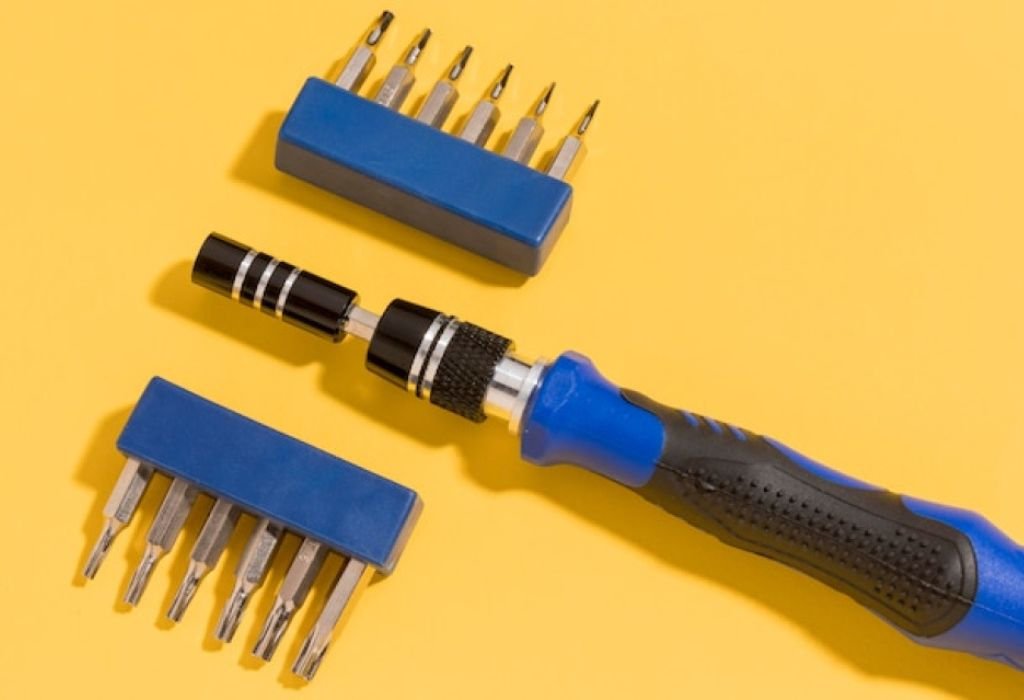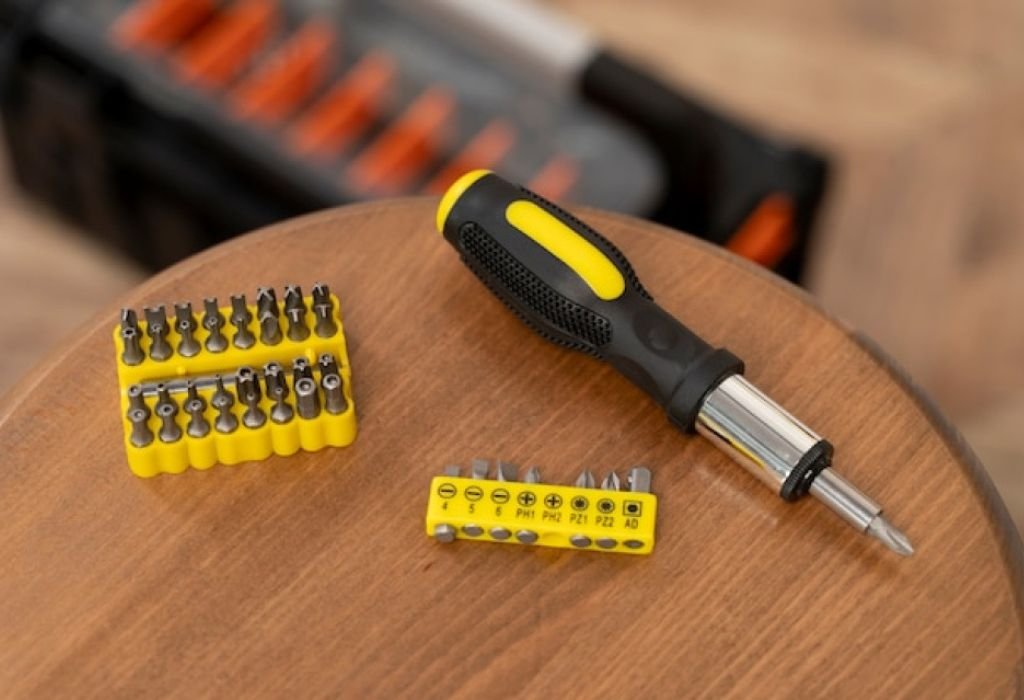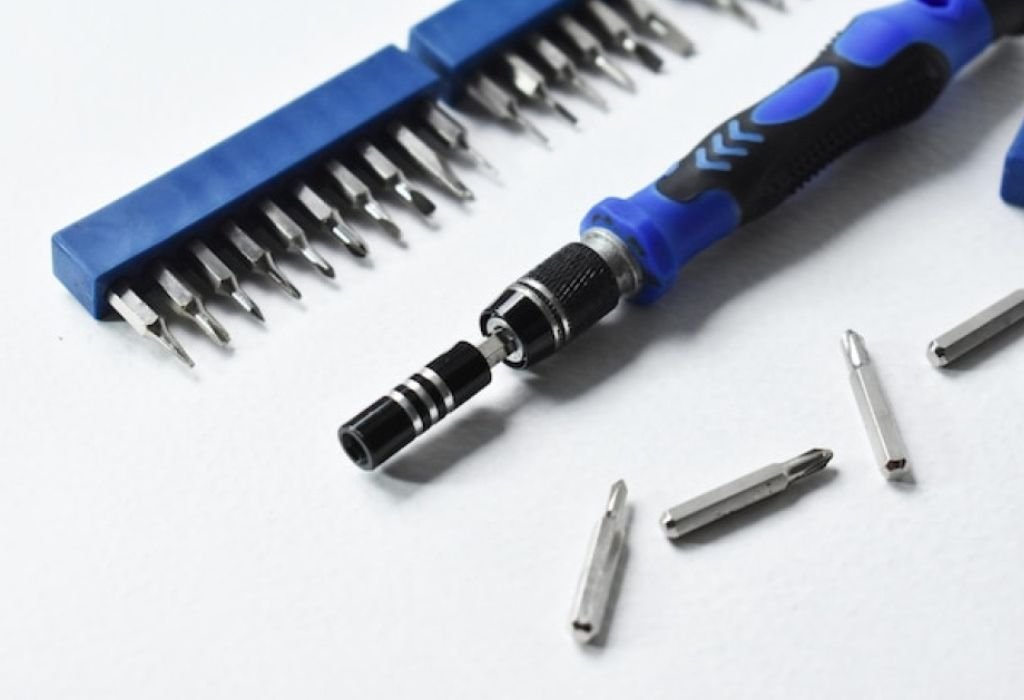Imagine fastening a stubborn screw into hardwood while your cordless drill struggles and begins to slip.
Switching to an impact driver feels like the perfect solution, but many users wonder if regular drill bits can handle the intense torque this tool delivers.
The curiosity is valid because impact drivers work differently than drills. Instead of relying only on constant rotation, they deliver bursts of rotational force, allowing screws to sink quickly with less effort on the wrist.
According to DeWalt, an impact driver produces up to 2,000–3,800 impacts per minute, which is significantly higher than what a standard drill provides [DeWalt].
The problem arises when regular bits face this powerful mechanism. Standard bits often lack the reinforced steel and torsion zones designed to absorb shock, making them more likely to snap or strip fasteners. A study on fastening failures shows that stripped screws are among the top causes of wasted time and damaged projects, often linked to mismatched or worn bits [Fastener Engineering].
The benefit of choosing the correct bit is clear. Impact-rated bits not only last longer but also reduce the chances of damaging fasteners or injuring the user. This guide explains whether regular bits can be used in an impact driver, how bit design affects performance, and what accessories ensure durability and safety.
Can I Use Regular Bits in an Impact Driver?

The short answer is yes, but it comes with limitations. Regular bits can physically fit in an impact driver, yet they are not designed to handle the high torque and hammering action this tool delivers.
Impact drivers generate rotational impacts that place extreme stress on the bit. Regular bits lack a torsion zone and reinforced steel, making them more likely to snap, strip, or wear down quickly under heavy use.
Will regular bits damage the impact driver?
No, the tool usually remains safe, but the bit and fastener are at risk of failure.
What makes a bit impact-rated?
It is made from tougher steel and includes a torsion zone that twists slightly to absorb impact stress.
Can impact-rated bits be used in a drill?
Yes, impact-rated bits are compatible with drills and work effectively in both tools.
When is a regular bit acceptable in an impact driver?
They can be used for light, low-torque tasks where stress on the bit is minimal.
What happens if a regular bit breaks during use?
It can damage the screw head or cause injury, which is why proper PPE is always recommended.
Impact Driver vs Drill: Why Bit Choice Matters
A drill provides steady torque and precision, while an impact driver uses hammering bursts to drive screws quickly. This difference means impact drivers place more stress on bits compared to drills.
Impact drivers accept 1/4-inch hex-shank bits, while many standard drill bits use round shanks. Using the wrong design can cause slipping or bit breakage.
Can I drill holes with an impact driver?
Yes, but only with hex-shank, impact-rated drill bits.
Which tool is better for delicate work?
A drill with a clutch provides more control and prevents overdriving.
Does an impact driver reduce wrist strain?
Yes, the hammering action transfers force to the tool instead of the user’s hand.
Why do impact drivers use hex-shank bits?
They lock into the collet securely to withstand repeated impacts.
Is an impact driver faster than a drill?
Yes, for heavy-duty screw driving, but drills remain better for precision tasks.
Anatomy of Bits: Regular vs Impact-Rated
Regular bits are often made from basic tool steel without shock-absorbing features. They can handle low to moderate torque but fail quickly under repeated impacts.
Impact-rated bits are built from stronger steel and engineered with a torsion zone. This design helps the bit flex slightly under pressure, preventing premature breakage.
Do impact bits last longer?
Yes, they resist wear and breakage when used with high-torque tools.
Are coatings important on bits?
Coatings like black oxide or titanium improve corrosion resistance but steel quality matters more.
Why do tips round off over time?
Worn fasteners, poor fit, and excessive speed accelerate tip wear.
Do all brands use torsion zones?
Most reputable brands incorporate some form of torsion technology in their impact-rated bits.
Are regular bits unsafe in heavy applications?
Yes, they can snap suddenly and cause injury or damage.
Choosing the Right Bit for the Job

Different fasteners require specific bit types. Phillips, Torx, square, and Pozidriv bits all perform differently under impact conditions.
Choosing the right length and profile reduces slippage and improves efficiency. Using magnetic holders keeps bits stable during high-speed driving.
Which bit profile resists cam-out best?
Torx and square bits provide better grip than Phillips.
Are shorter bits stronger?
Yes, shorter bits reduce flexing and are less likely to snap.
Do magnetic bit holders help?
Yes, they keep bits aligned and screws steady.
Can one bit handle all tasks?
No, using the correct profile for each screw prevents stripping.
Are longer bits useful?
They increase reach but can wobble and reduce strength.
Settings and Technique: Make Any Bit Last Longer
Even the best bit fails if used incorrectly. Starting slowly, applying steady pressure, and pre-drilling in dense materials extend bit life.
Modern impact drivers often include multiple speed settings. Using the correct mode ensures better results and prevents damage to bits and screws.
Why do screws strip?
Incorrect bit size, worn tips, or excessive speed cause stripping.
Should pilot holes be used?
Yes, especially in hardwoods or metal to reduce stress on the bit.
Is leaning harder on the tool effective?
Firm axial pressure helps, but excessive force causes side-loading and breakage.
Do speed settings matter?
Yes, lower speeds improve control and reduce wear on bits.
What angle should the bit maintain?
Keep it straight to prevent cam-out and uneven wear.
Drilling With an Impact Driver
Impact drivers can drill if fitted with hex-shank, impact-rated drill bits. Regular smooth-shank drill bits are not suitable.
Step drilling and lubrication in metals reduce stress. For wood, spade bits with impact-ready shanks are effective when used correctly.
Are spade bits safe in impact drivers?
Yes, if they are hex-shank and impact-rated.
Can hole saws be used?
Yes, with impact-rated arbors and slower speeds.
Is an impact driver good for masonry?
No, a hammer drill is better suited for concrete or brick.
What about Forstner bits?
Avoid them, as they are not designed for impact action.
Can step bits be used?
Yes, impact-rated step bits handle sheet metal effectively.
Accessories That Must Be Impact-Rated
Accessories like socket adapters, nut drivers, and extensions face the same stress as bits. Using non-rated versions can lead to twisting or breakage.
Impact-rated accessories are built from hardened steel and include designs that absorb torque. Investing in these prevents costly failures.
Can regular sockets be used in an impact driver?
No, use impact-rated sockets to handle the repeated hammering safely.
Why do cheap adapters fail?
They lack hardened steel and torsion relief.
Are magnetic nut drivers impact-safe?
Only if labeled as impact-rated by the manufacturer.
Do bit holders need to be impact-rated?
Yes, they are critical connection points and take full torque loads.
Can extension bars handle impacts?
Only impact-rated versions are safe under repeated stress.
Troubleshooting: Snapped Bits and Stripped Screws
Bit failures are common when the wrong accessories or techniques are used. Identifying the cause prevents repeat problems.
Using correct profiles, replacing worn bits, and applying proper technique reduces project downtime and frustration.
Why do bits snap?
Excessive torque, side-loading, or brittle material causes breakage.
Why do screw heads strip?
Poor fit between the bit and fastener accelerates wear.
What should be done if a bit breaks in the screw?
Use extractors or back the screw out slowly with reverse torque.
Why does the driver keep hammering without turning the screw?
The bit may be slipping or the fastener is bound in place.
How can these issues be prevented?
Use impact-rated bits, correct profiles, and pilot holes where needed.
Safety Essentials for High-Torque Driving

Impact drivers produce high torque that can cause accidents if handled carelessly. Wearing proper protective gear prevents injuries from flying fragments.
Workpieces should be clamped securely to avoid movement. Users must also keep clothing and hands away from moving parts.
Are broken bits dangerous?
Yes, fragments can fly at high speed and cause injury.
Should gloves be worn when using impact drivers?
Yes, but they should be snug-fitting to avoid entanglement.
Is eye protection necessary?
Yes, safety glasses are critical at all times.
Can impacts cause kickback?
Yes, especially with large fasteners or spade bits.
Should the battery be removed before changing bits?
Yes, to prevent accidental activation.
Future Trends: One-Tool Workflow
Manufacturers are expanding impact-rated accessories to encourage one-tool workflows. Users now have access to impact-ready drill bits, nut drivers, and hole saws.
As technology advances, expect more durable steels, precision tips, and digital torque control for impact drivers.
Will impact drivers replace drills?
No, drills remain better for precision drilling and light-duty fastening.
What is the benefit of one-tool workflows?
Fewer tools are needed on the job site, increasing convenience.
Are manufacturers focusing on durability?
Yes, impact-rated bits are now marketed with claims of up to three times longer life.
Will digital features be common?
Yes, smart drivers with torque monitoring are emerging.
Is the market for impact bits growing?
Yes, as more DIYers and professionals adopt impact drivers.
Conclusion
Regular bits can be used in an impact driver, but they are not the best choice for demanding tasks. Impact-rated bits are engineered to handle torque, prevent stripping, and extend tool life.
Choosing the right accessories ensures safety, efficiency, and durability. For long-term success, invest in impact-rated bits, practice proper driving techniques, and always follow safety precautions.

I’m John F. Nicholas, the founder, lead writer, and drill enthusiast behind 101drill.com. With years of hands-on experience in power tools and DIY projects, I created this platform to share practical knowledge, expert tips, and real-world insights to help others master the art of drilling.
